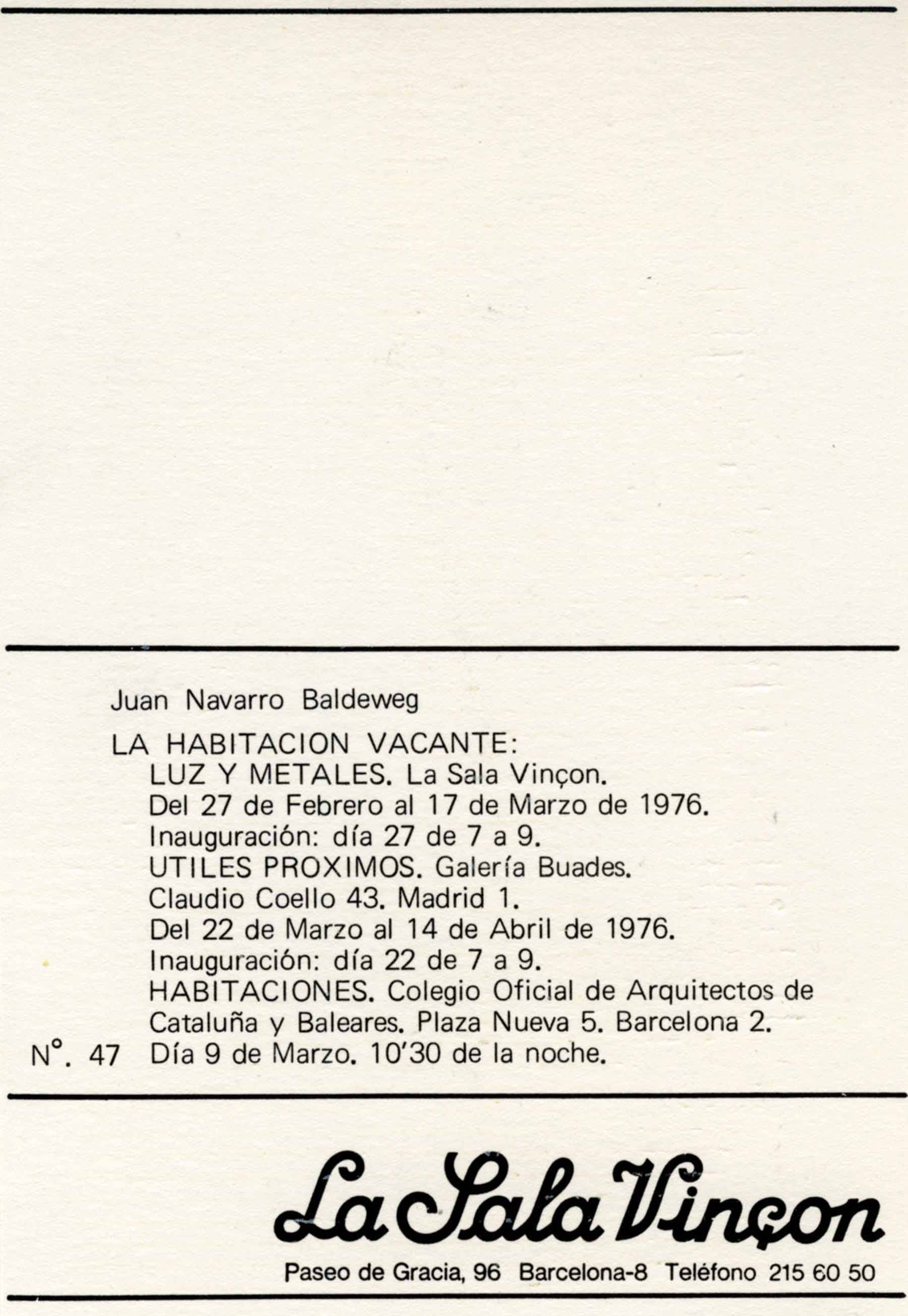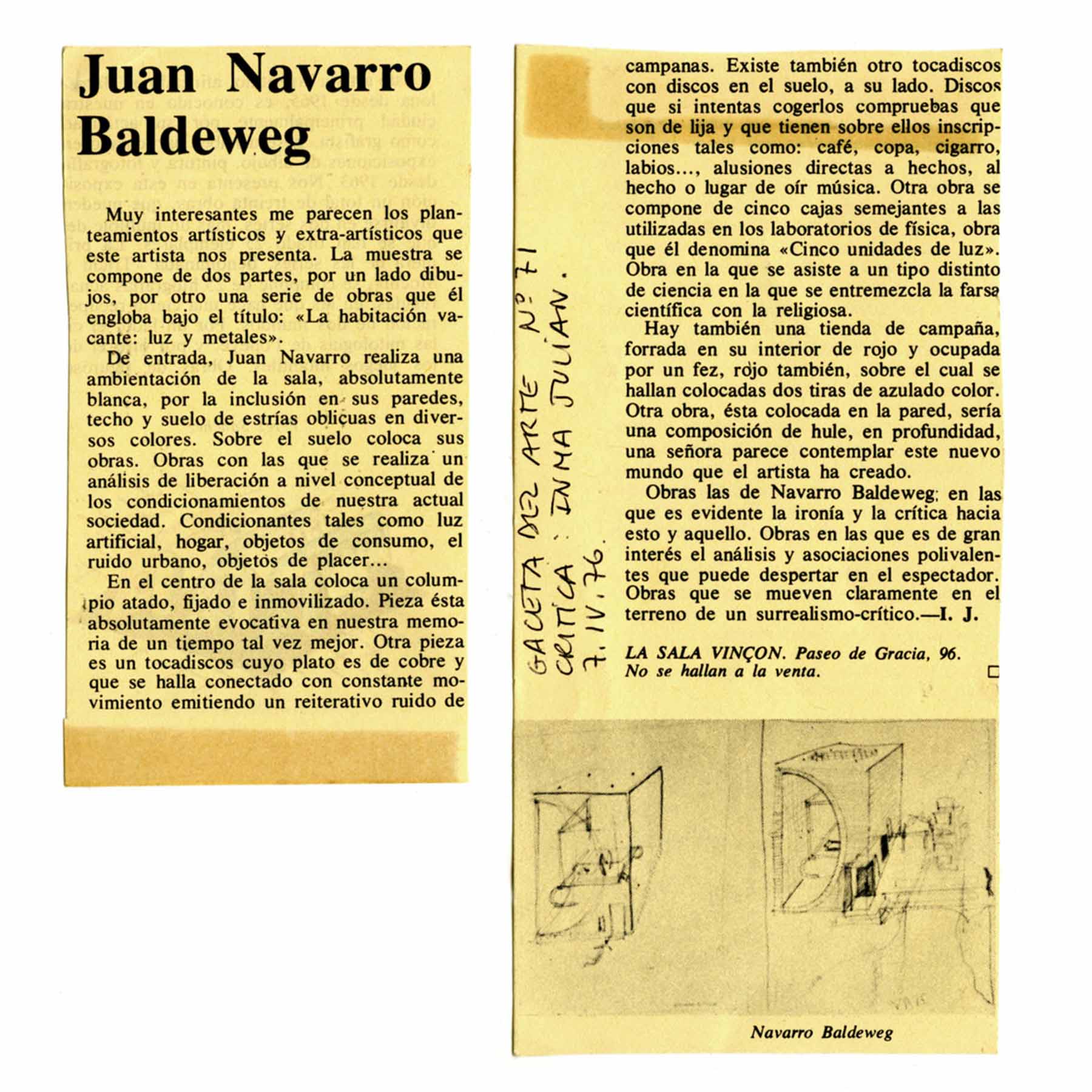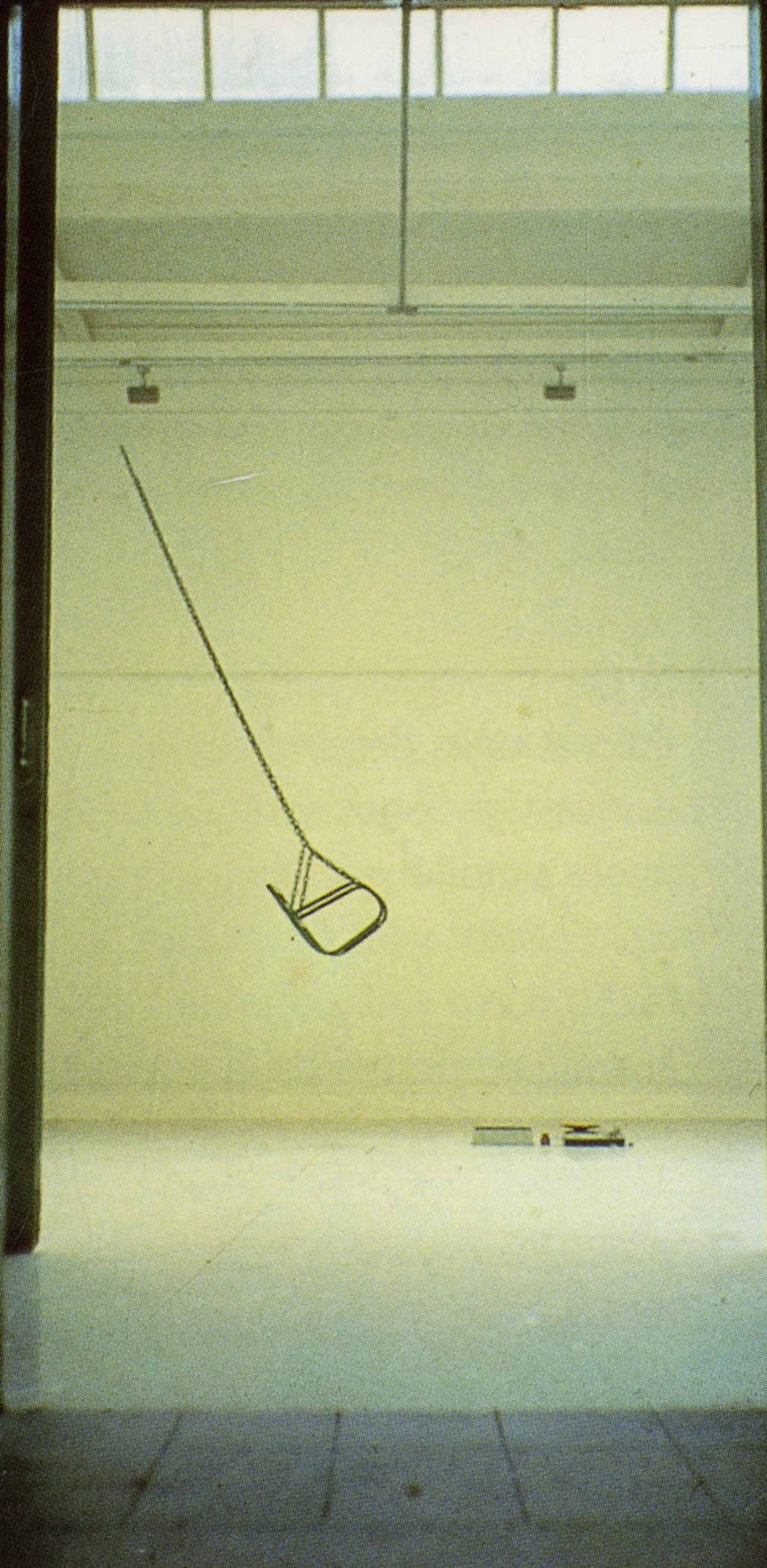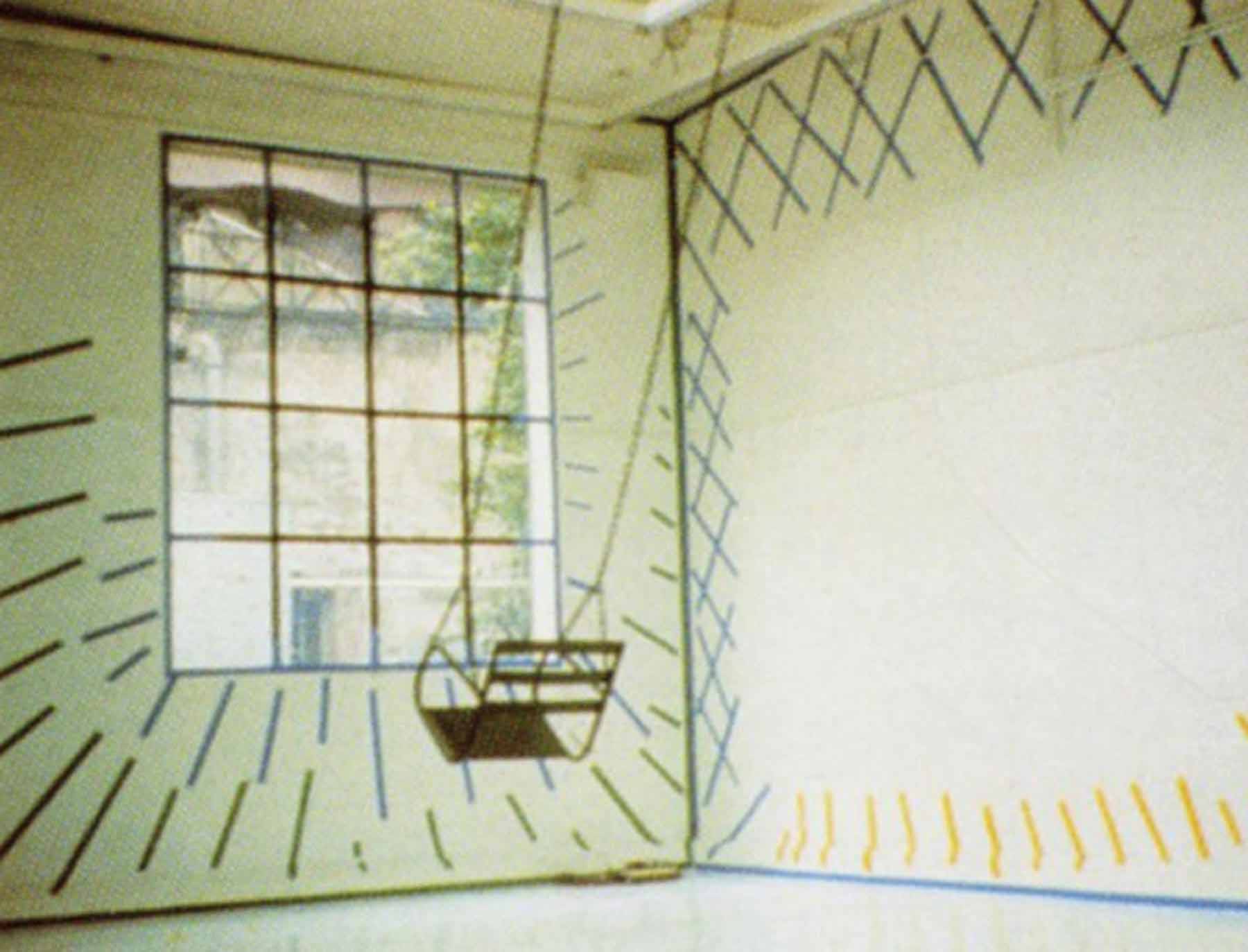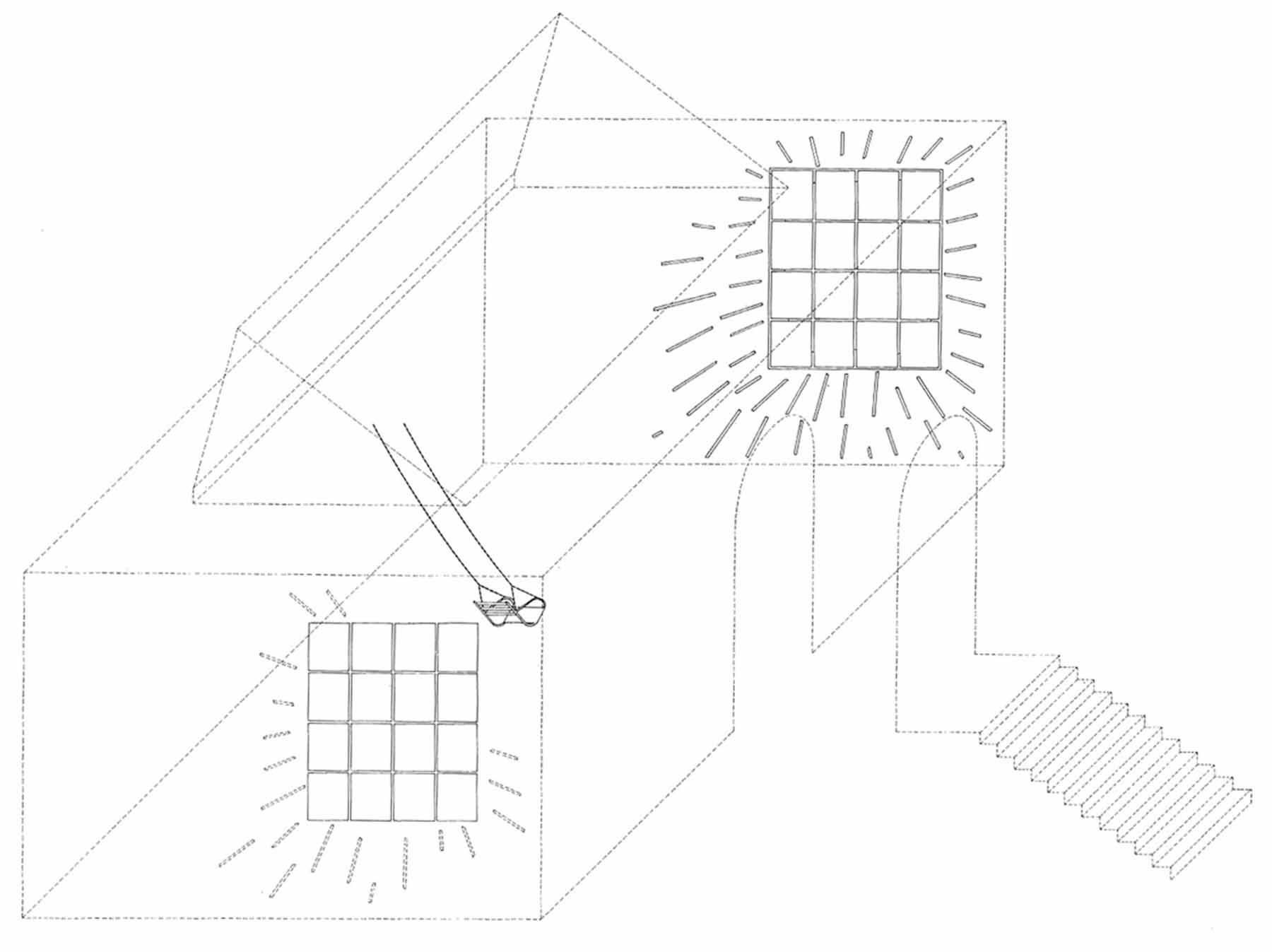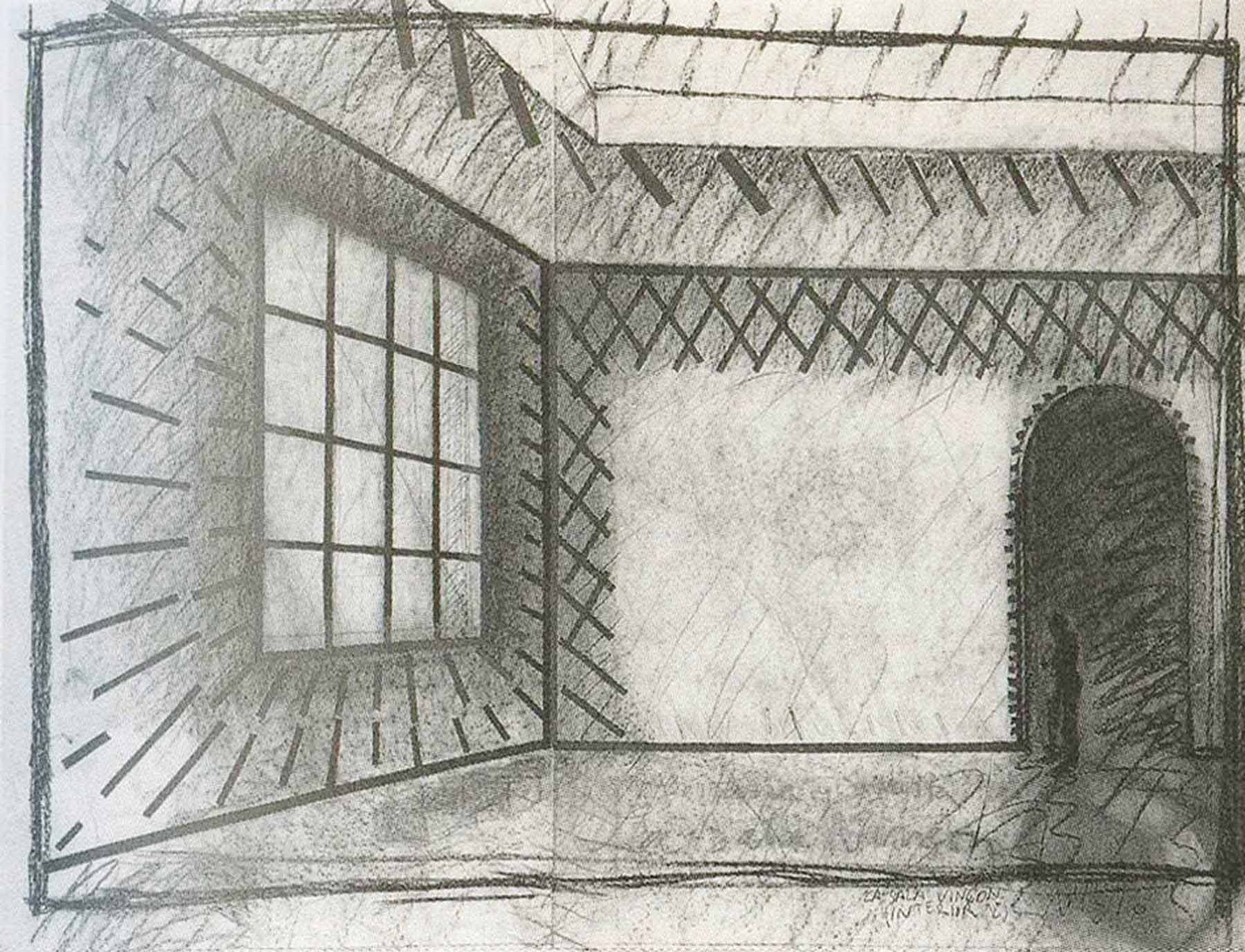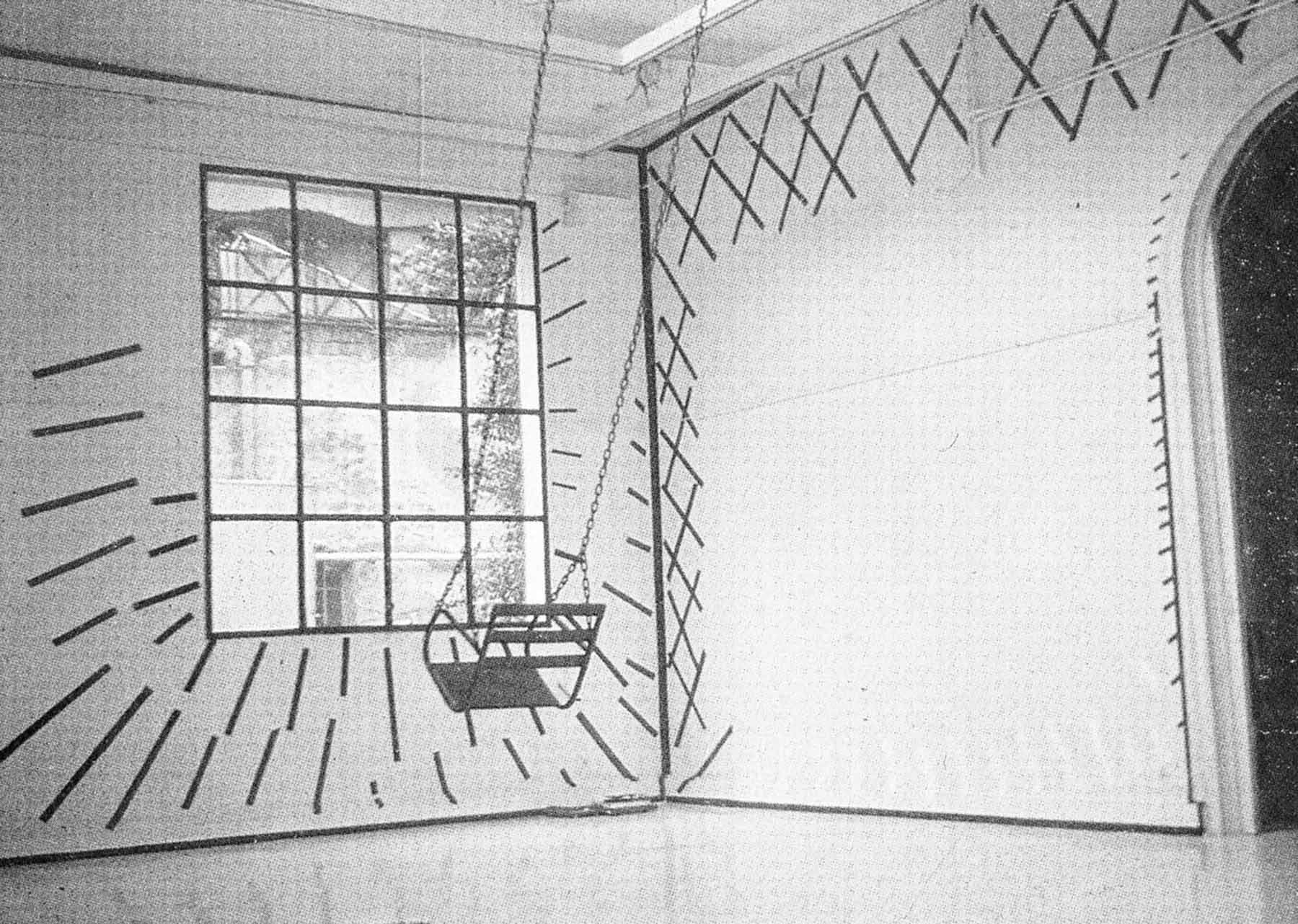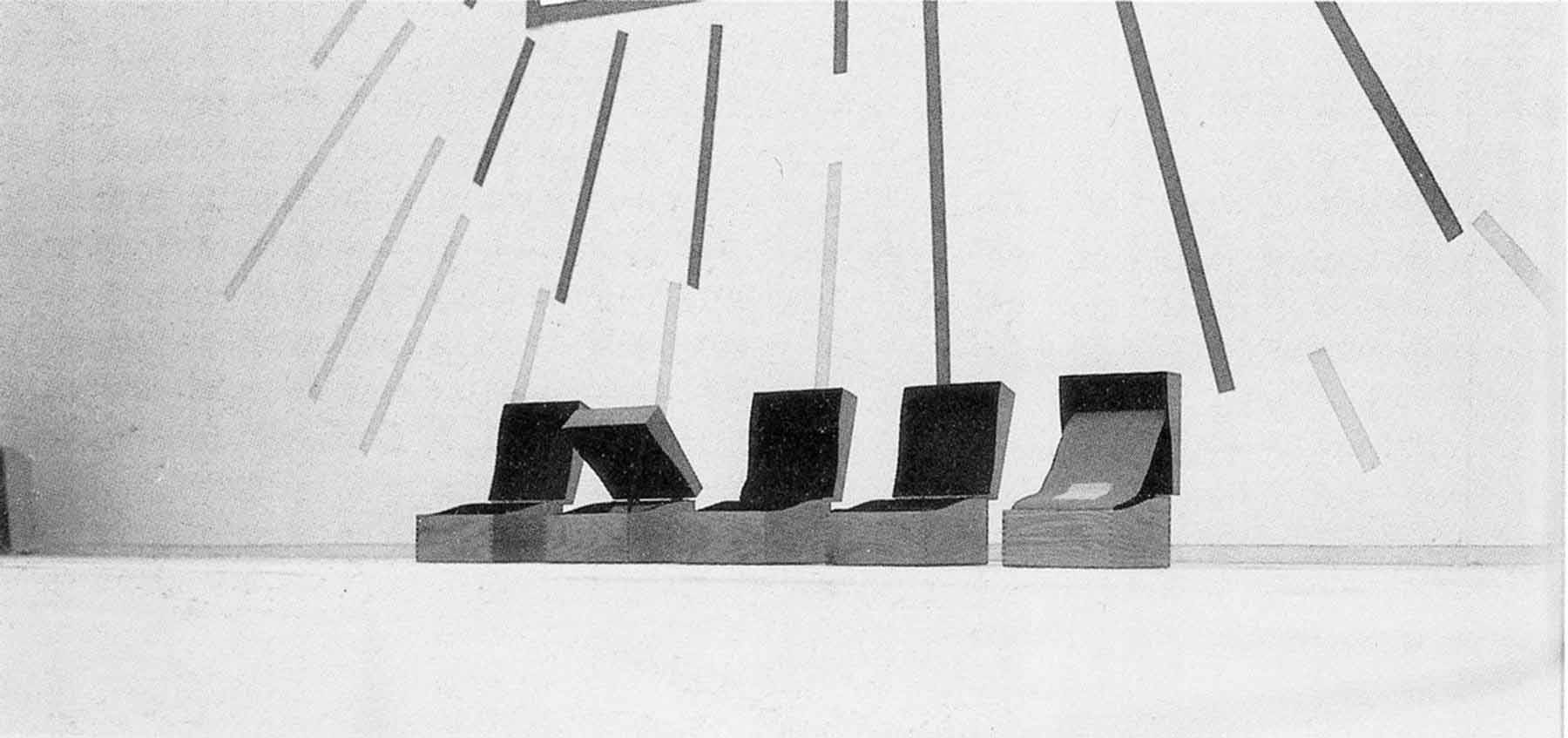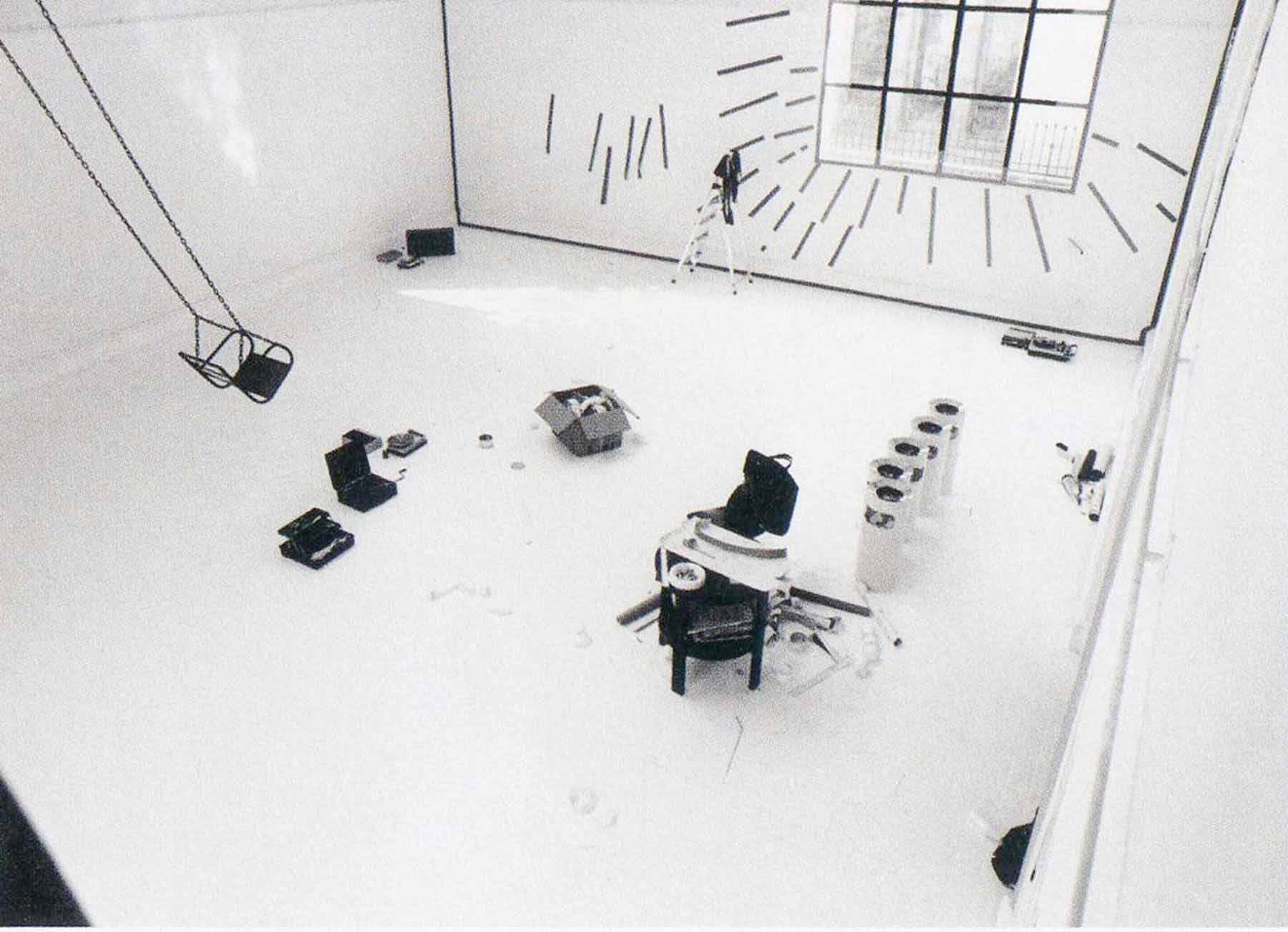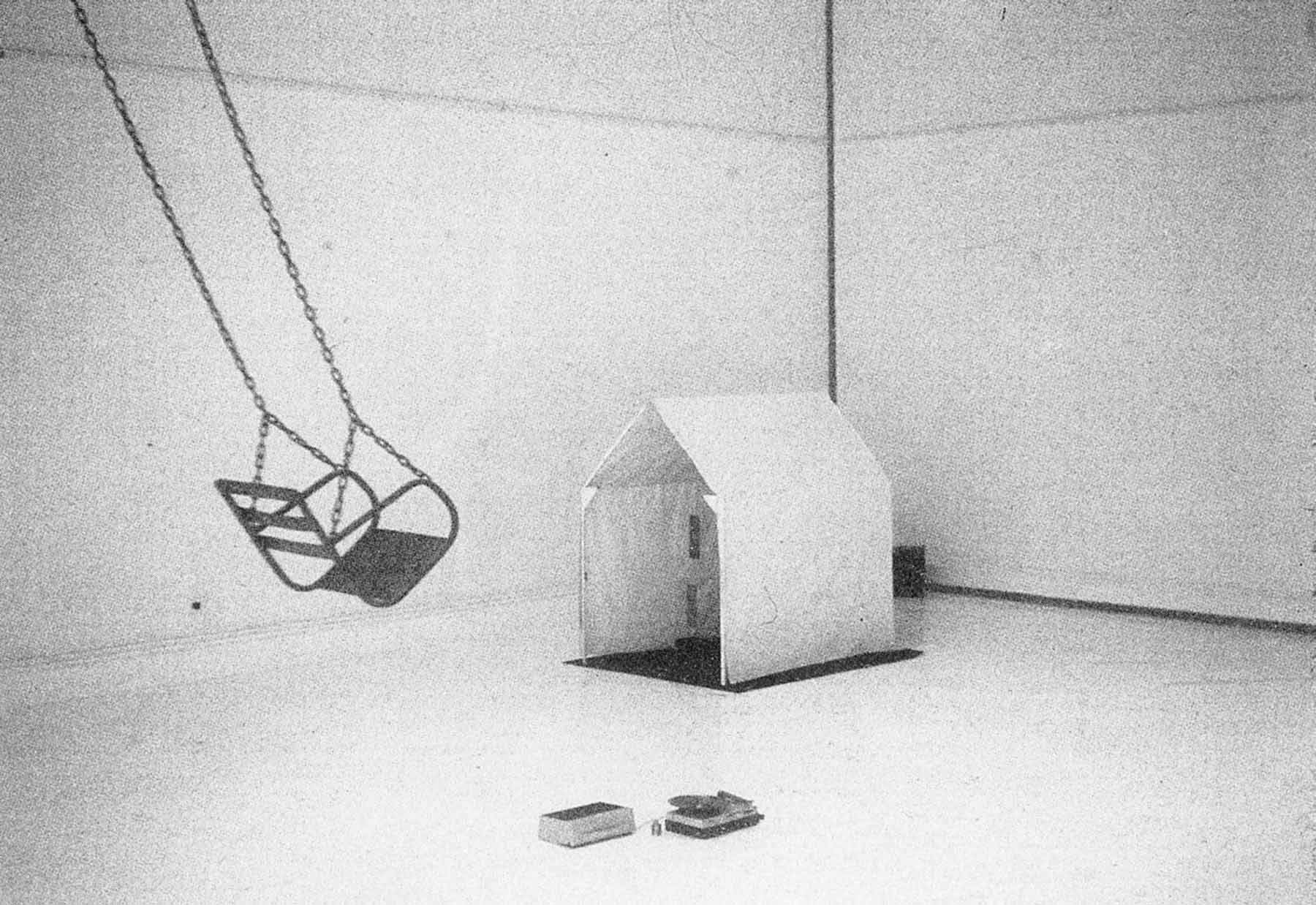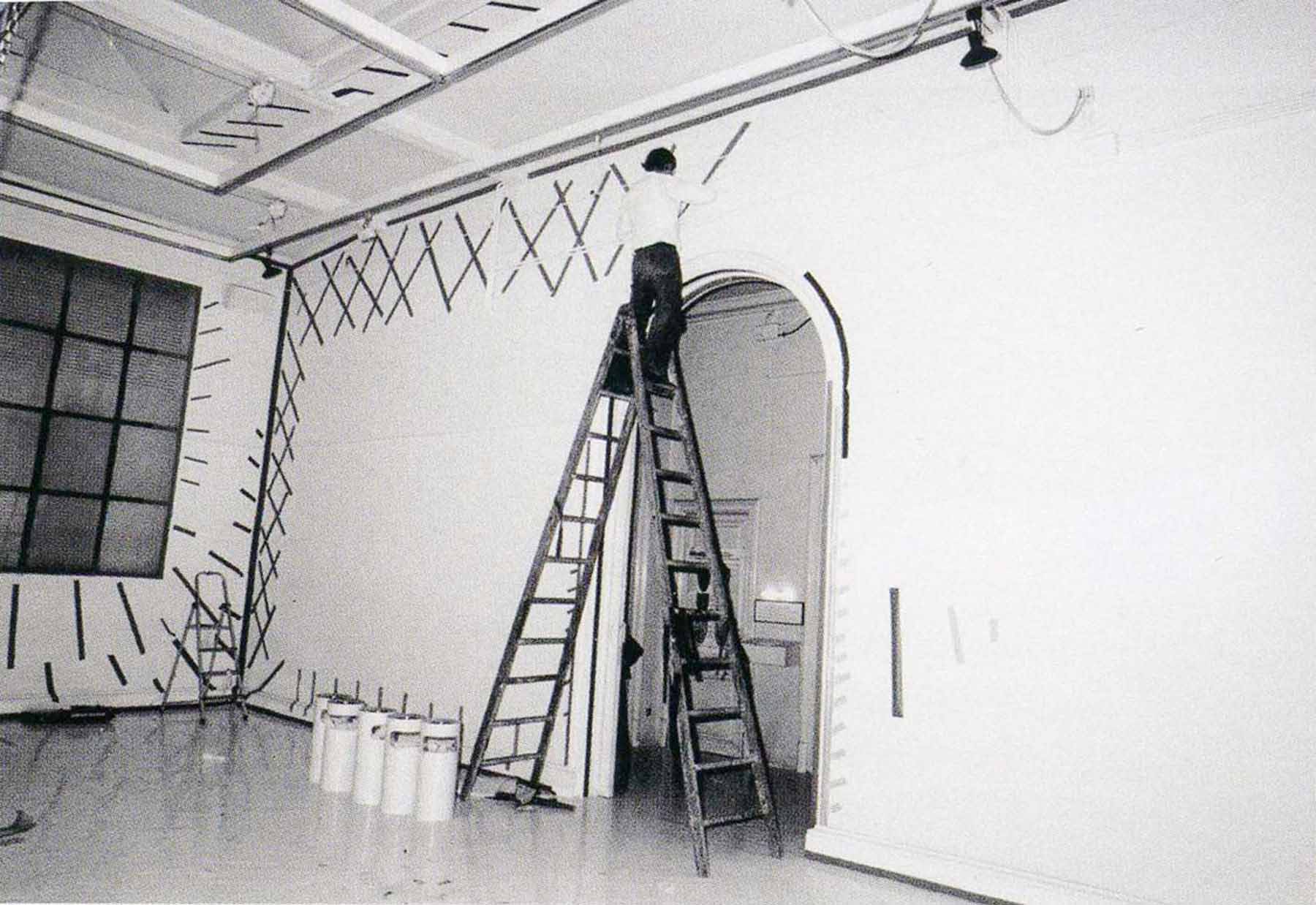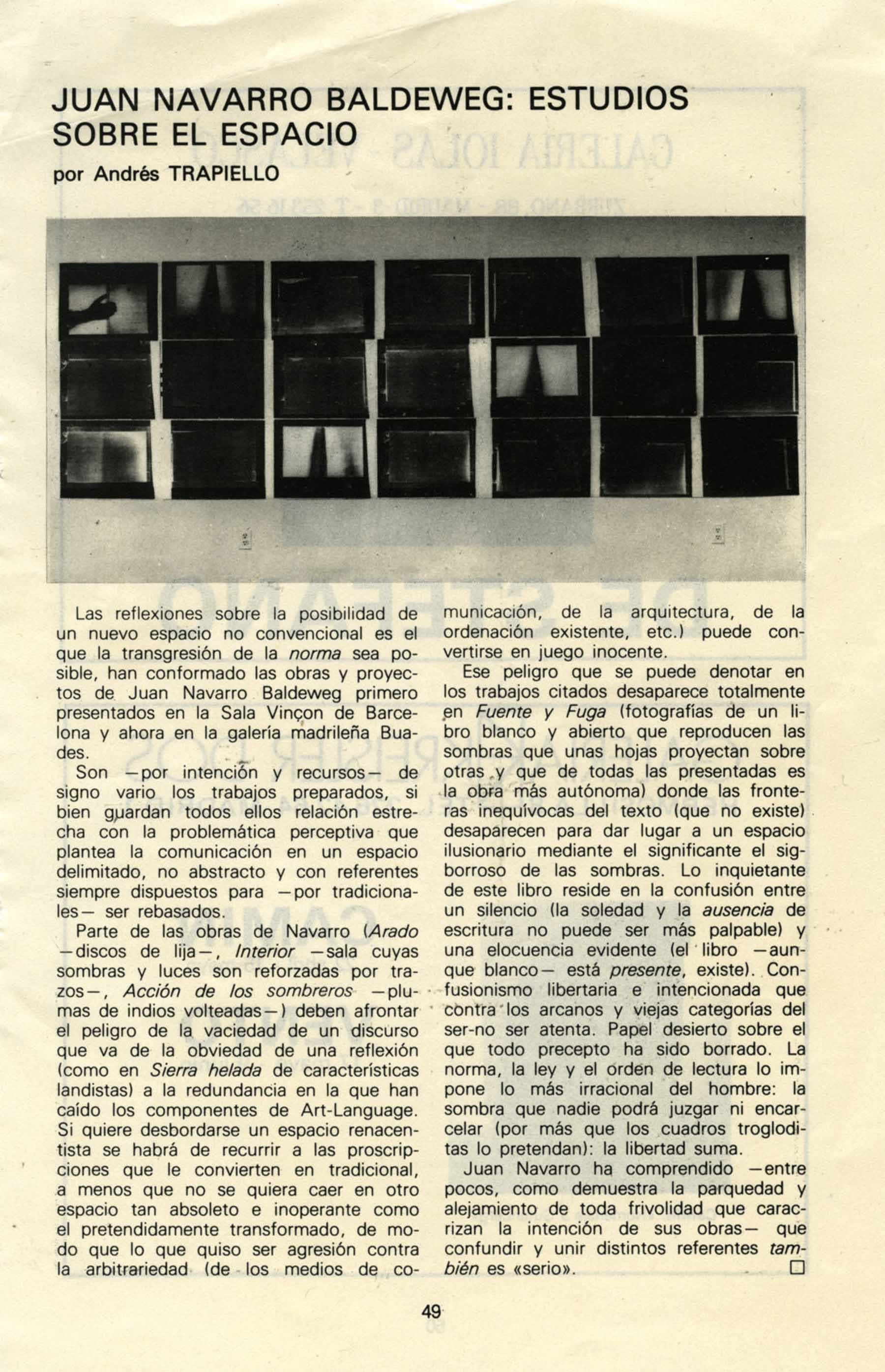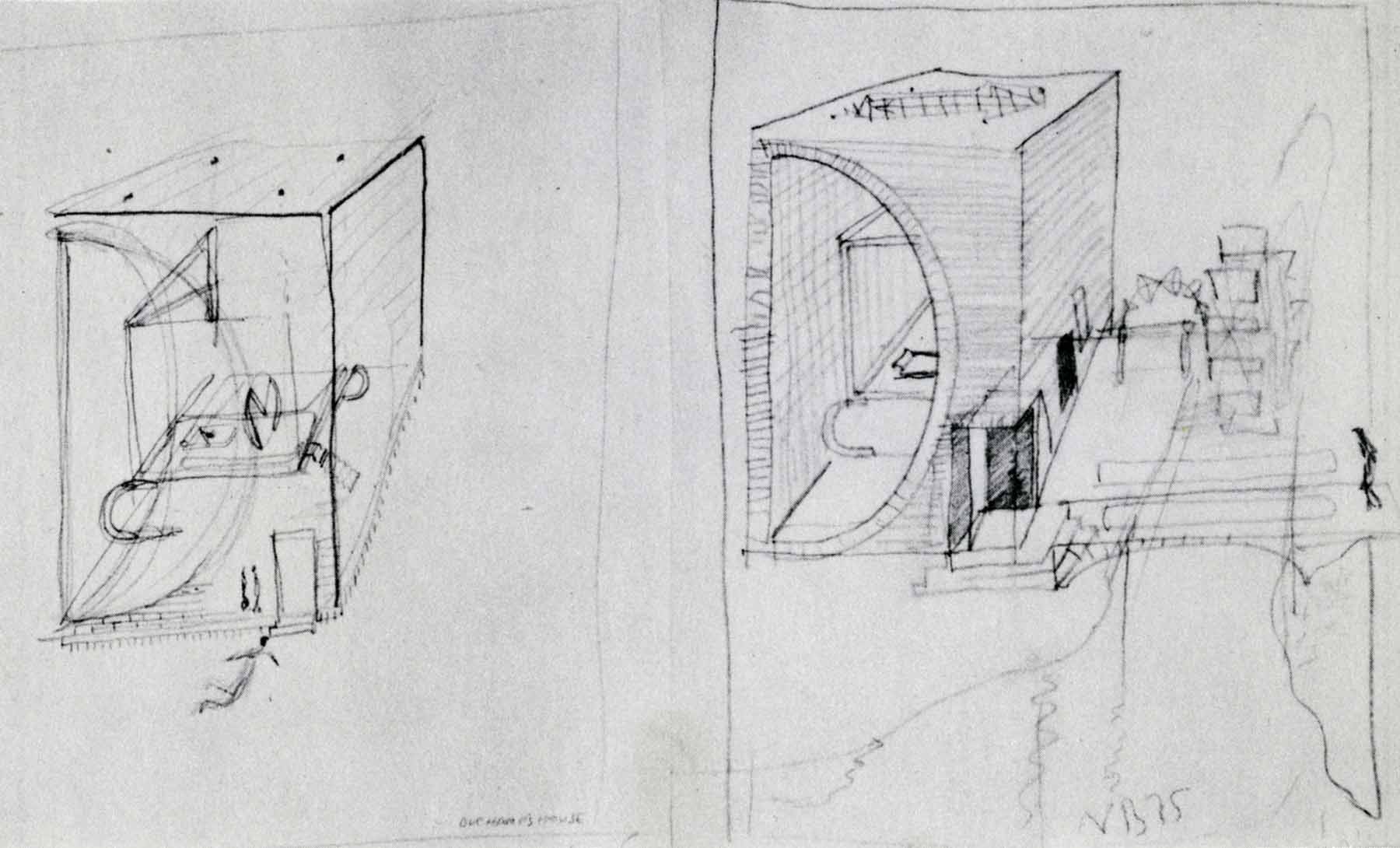
La habitación vacante
Juan Navarro Baldeweg
27/02/76. (Sala 047)
During 1976 the Barcelona culture was in full swing, Juan Navarro Baldeweg is fortunate to present the “Luz y Metales” (Light and Metals) exhibition in the legendary Sala Vinçon.
The content of this exhibition was the result of their work and research during a scholarship in M.I.T. (Center of Advanced Visual Studies) in Massachussetts between 1971 and 1975 under the guidance of Gyorgy Kepes.
As Baldeweg says, in his lecture “Horizonte habitable” (11th November 2002) during his stay in Massachussetts he explored “how to make works that define a natural living area: a house of a man”
Juan Navarro presents a number of pieces, which reflected upon the atmosphere. Among the pieces we find: “Cinco unidades de la luz”, “La fuente y el drenaje”, “sombra Macchia en forma de libro”, “Arado”, a tent with walls lined in red velvet or “Edge of the Sun”. But possibly the most meritorious, was the phenomenal atmosphere the main hall was endowed with. In this sky lit room with two facing windows which could be reached climbing up a ladder; Juan Navarro fixed a swing at its highest swing point and captured the rays of light that shone through the windows with brushstrokes of blue, green, black, red and yellow.
This view of the surprisingly static swing contrasted with the effort of the visitor to get to the hall using the stairs.
The swing was presented to the visitor at eye level evoking child pleasure by using the collective memory. This freezing of movement was enhanced by a device made by a turntable equipped with a set of orchestral cymbals that made sounds with the same frequency as the motion of the swing and that marked the course of time.
With this interior Baldeweg highlighted the essential dimensions of the physical environment. These ingredients were none other than light, gravity, the horizon and the hand. He captures light through the use of his hand, redraws with relaxed strokes and in colour the rays of light shining through the window, as if it were a mask superimposed on the real environment, imitating and reflecting reality as an echo. This superposition of the effects of the outdoor atmosphere on the window emerged from Baldeweg Navarro’s fascination at seeing the Mediterranean light again, after his stay in America. The horizon was activated when travelling up to the hall, when seeing the swing for the first time and when entering the hall, viewing the windows from left to right which left us with an evident presence of a terrestrial force that contrasted against the swaying of the swing. It was a kind of antagonistic symmetry feeling. Gravity was manifested by the detained presence and weightlessness of the swing.
This memorable exhibition by Juan Navarro Baldeweg was a true laboratory of perception: achieving this mental space suspended in time and instant. It was without a doubt a clarifying effort, involving the activation of the passive subject and leaving certain things in the physical environment out in the open, like gravity, the horizon, light and space. A real sound box, for perceptive enjoyment.
Text by Iker Moya & Estíbaliz Carretero
Bibliography:
– Navarro Baldeweg, Juan.; Juan Navarro Baldeweg : opere e progetti / with testi di Juan José Lahuerta, Angel González García and Juan Navarro Baldeweg ;Electa, Milano : 1990.
– Navarro Baldeweg, Juan.; “El Croquis”, Nº 133
– Navarro Baldeweg, Juan. ; Navarro Baldeweg ; editor, Raúl Rispa. Tanais, Sevilla : 2001.
– Faura, Ramón; Ibarra, Santi; PIZZA, Antonio (eds.) .”Arquitecturas sin lugar”: 1968/2008; Publisher: “Col•legi d´arquitectes de Catalunya” (College of Architects of Catalonia).
